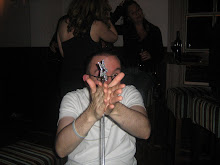 hen Smith gets to Washington he is awe-inspired by the architecture and the history that the place has but is ridiculed by the press for being a simpleton. Smith is taken under the wing of Senator Paine, his father's oldest and best friend as well as charming over Arthur's Saunders, Paine's Chief-of-Staff. Smith proposes a new legislation to approve a government loan to allow for some land to be purchased in his state for a national Boy's Camp, and the loan will be payed back by donations from the scouts. Paine is leaned on by the manipulative political adviser Jim Taylor to quash Smith because the land is already part of a dam-building scheme constructed by Taylor. Paine decides to make out that Smith owns the land and is defrauding the scouts but by this stage Saunders is on Smith's side and uncovers Taylor's corruption. The film's most famous scene is where Smith decides to embark on a fillibuster, holding the floor and speaking for as long as possible without sitting down, when all the senators leave the room. Taylor and Paine try and break his spirit by rigging the press in Taylor's state and making out that no-one is supporting him but he finds solace in a smile from the senate's president. At the end of the film Smith collapses from exhaustion and Paine tries to commit sucicide when he is stopped he confesses everything and Smith's reputation is redeemed.
hen Smith gets to Washington he is awe-inspired by the architecture and the history that the place has but is ridiculed by the press for being a simpleton. Smith is taken under the wing of Senator Paine, his father's oldest and best friend as well as charming over Arthur's Saunders, Paine's Chief-of-Staff. Smith proposes a new legislation to approve a government loan to allow for some land to be purchased in his state for a national Boy's Camp, and the loan will be payed back by donations from the scouts. Paine is leaned on by the manipulative political adviser Jim Taylor to quash Smith because the land is already part of a dam-building scheme constructed by Taylor. Paine decides to make out that Smith owns the land and is defrauding the scouts but by this stage Saunders is on Smith's side and uncovers Taylor's corruption. The film's most famous scene is where Smith decides to embark on a fillibuster, holding the floor and speaking for as long as possible without sitting down, when all the senators leave the room. Taylor and Paine try and break his spirit by rigging the press in Taylor's state and making out that no-one is supporting him but he finds solace in a smile from the senate's president. At the end of the film Smith collapses from exhaustion and Paine tries to commit sucicide when he is stopped he confesses everything and Smith's reputation is redeemed.Just like with Stewart and Capra's most famous collobration, It's a Wonderful Life, Mr Smith Goes to Washington is remembered for its final scenes. However before that there is a lot that no-one ever thinks about including the scene where Smith tries to punch a lot of journalists after they diss him and Smith's romance with Paine's daughter which is used as a distraction for Smith's plans. However there is a lot to like here, Capra's themes of the underdog triumphing is possibly at its most blatant here with the innocent and ultimately good Smith gets one over on the cowardly Paine and the tyranical Taylor. Jean Arthur again proves that she is the most consisent of Capra's female leads, with Saunders she portrays a woman trying to survive in a masculine world and has almost lost all her feminity to do so. In fact there is no romantic end to her relationship with Smith however her greatest moment is when someone calls her Clarissa, her first name, which makes her feel somewhat human. Stewart himself is able to play a real, likeable if innocent character with ease. While there are some fine supporting performances from Claude Rains as the multi-layered Paine and Edward Arnold as the just plain evil Taylor. Rains, Stewart and Harry Carey (as the president of the senate) were all nominated for Oscars although none were succesful. Indeed only the story won an Oscar but it did come up against Gone With The Wind, I reckon if it had been released a year before or after it may have done better. Although this is more than a fitting end to my Frank Capra education.

No comments:
Post a Comment